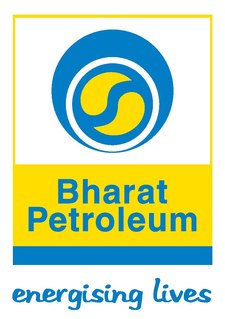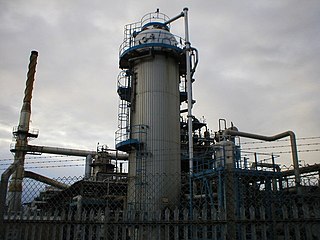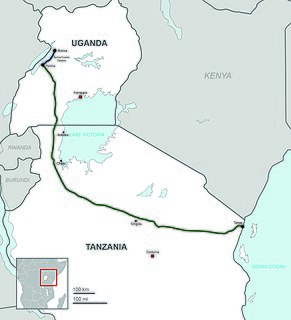
Hess Corporation is an American global independent energy company involved in the exploration and production of crude oil and natural gas. It was formed by the merger of Hess Oil and Chemical and Amerada Petroleum in 1968. Leon Hess served as CEO from the early 1960s through 1995, after which his son John B Hess succeeded him as chairman and CEO.

Nigeria is the largest oil and gas producer in Africa. Crude oil from the Niger delta basin comes in two types: light, and comparatively heavy – the lighter has around 36 gravity while the heavier has 20–25 gravity. Both types are paraffinic and low in sulfur. Nigeria's economy and budget have been largely supported from income and revenues generated from the petroleum industry since 1960. Statistics as at February 2021 shows that the Nigerian oil sector contributes to about 9% of the entire GDP of the nation. Nigeria is the largest oil and gas producer in Africa, a major exporter of crude oil and petroleum products to the United States of America. In 2010, Nigeria exported over one million barrels per day to the United States of America, representing 9% of the U.S. total crude oil and petroleum products imports and over 40% of Nigeria exports.

Petroleum production in Canada is a major industry which is important to the economy of North America. Canada has the third largest oil reserves in the world and is the world's fourth largest oil producer and fourth largest oil exporter. In 2019 it produced an average of 750,000 cubic metres per day (4.7 Mbbl/d) of crude oil and equivalent. Of that amount, 64% was upgraded and non-upgraded bitumen from oil sands, and the remainder light crude oil, heavy crude oil and natural-gas condensate. Most of Canadian petroleum production is exported, approximately 600,000 cubic metres per day (3.8 Mbbl/d) in 2019, with 98% of the exports going to the United States. Canada is by far the largest single source of oil imports to the United States, providing 43% of US crude oil imports in 2015.
Global strategic petroleum reserves (GSPR) refer to crude oil inventories held by the government of a particular country, as well as private industry, to safeguard the economy and help maintain national security during an energy crisis. Strategic reserves are intended to be used to cover short-term supply disruptions.

Bharat Petroleum Corporation Limited (BPCL) is an Indian central public sector undertaking under the ownership of Ministry of Petroleum and Natural Gas, Government of India. It operates three refineries in Bina, Kochi and Mumbai. BPCL is India's second-largest government-owned downstream oil producer, whose operations are overseen by the Ministry of Petroleum and Natural Gas. It was ranked 309th on the 2020 Fortune list of the world's biggest public sector undertakings, and 792nd on Forbes's 2021 "Global 2000" list.

Hindustan Petroleum Corporation Limited (HPCL) is an Indian oil and gas refining company headquartered in Mumbai. Since 2018, ONGC has owned a majority stake in the company. The company is ranked 367th on the Fortune Global 500 list of the world's biggest corporations as of 2016. On 24 October 2019, the company became a Maharatna PSU.

QatarEnergy, formerly Qatar Petroleum (QP), is a state owned petroleum company of Qatar. The company operates all oil and gas activities in Qatar, including exploration, production, refining, transport, and storage. The President & CEO is Saad Sherida al-Kaabi, Minister of State for Energy Affairs. The company's operations are directly linked with state planning agencies, regulatory authorities, and policy making bodies. Together, revenues from oil and natural gas amount to 60% of the country's GDP. As of 2018 it was the third largest oil company in the world by oil and gas reserves. In 2020, the company had total revenues of US$21bn, a net income of US$7.9bn, and total assets of US$116bn. In 2021, QatarEnergy was the fifth largest gas company in the world.
Western Refining, Inc., is a Texas-based Fortune 200 and Global 2000 crude oil refiner and marketer operating primarily in the Southwestern, North-Central and Mid-Atlantic regions of the United States. Western Refining (WNR) has been publicly traded on the New York Stock Exchange since January 2006 and is the fourth largest publicly traded independent refiner and marketer in the nation. Western Refining has been acquired by Tesoro another independent petroleum Refining and marketing corporation.

Eastham Oil Terminal is situated close to the small town of Eastham on the Wirral Peninsula, beside the Manchester Ship Canal. It was commissioned in 1954 close to the Queen Elizabeth II Dock and is a storage and export facility for oil products refined at Stanlow Refinery, to which it is connected by pipeline. The site is currently operated by Nynas.

Milford Haven Refinery was an oil refinery situated on the Pembrokeshire coast in Wales, United Kingdom. The refinery began operating in 1973 under Amoco's ownership, but in its final years it was owned by Murco Petroleum. The closure of the refinery was announced in November 2014. The site was sold to Puma Energy in 2015 for use as a petroleum storage and distribution terminal.

Puma Energy is a Swiss multinational mid- and downstream oil company, majority-owned by Singpaore-based Swiss company Trafigura.

This article describes energy and electricity production, consumption, import and export in Kenya. Kenya's current effective installed electricity capacity is 2,651 MW, with peak demand of 1,912 MW, as of November 2019. At that time, demand was rising at a calculated rate of 3.6 percent annually, given that peak demand was 1,770 MW, at the beginning of 2018. Electricity supply is mostly generated by renewable sources with the majority coming from geothermal power and hydroelectricity.
The Uganda Oil Refinery is a planned crude oil refinery in Uganda.
The Uganda National Oil Company (UNOC), also known as the National Oil Company of Uganda, is a limited liability petroleum company in Uganda owned by the Ugandan government. The 2013 Petroleum Act of Uganda provides for the establishment of the national oil company. UNOC's board of directors was inaugurated on 23 October 2015 by the president of Uganda.
The Uganda–Kenya Crude Oil Pipeline (UKCOP) was a proposed pipeline to transport crude oil from Uganda's oil fields in the Northern and Western Regions to the Kenyan port of Lamu on the Indian Ocean. Along the way, the pipeline would have picked up more crude oil from the South Lokichar Basin and other oil fields in northwestern Kenya and delivered it to Lamu for export. South Sudan had also planned to construct a pipeline from its Unity State, linking to the UKCOP as an alternative to its only current oil export route through Port Sudan in its northern neighbor Sudan.
The Hoima–Kampala Petroleum Products Pipeline (HKPPP) is a proposed pipeline to transport refined oil products from the Uganda Oil Refinery in Hoima to a distribution terminal near Buloba in Wakiso District, approximately 28 kilometres (17 mi), by road, west of Kampala's central business district.

The East African Crude Oil Pipeline (EACOP), also known as the Uganda–Tanzania Crude Oil Pipeline (UTCOP), is under construction and intended to transport crude oil from Uganda's oil fields to the Port of Tanga, Tanzania on the Indian Ocean. Once completed, the pipeline will be the longest heated crude oil pipeline in the world. Because of the large scale displacement of communities and wildlife, global environmental groups are protesting its construction and finance.
The petroleum industry in India dates back to 1889 when the first oil deposits in the country were discovered near the town of Digboi in the state of Assam. The natural gas industry in India began in the 1960s with the discovery of gas fields in Assam and Maharashtra. As on 31 March 2018, India had estimated crude oil reserves of 594.49 million metric tonnes (Mt) and natural gas reserves of 1339.57 billion cubic metres of natural gas (BCM).

The Occidental Refinery was an oil refinery on Canvey Island, Essex, England. Located in the Thames Estuary, the partly-built, non-operational, six million tonne/year refinery was planned and constructed by Occidental Refineries Limited in 1970–5 and demolished in 1996–7.
The Indeni Petroleum Refinery is an oil refinery in Zambia's industrial city of Ndola.











